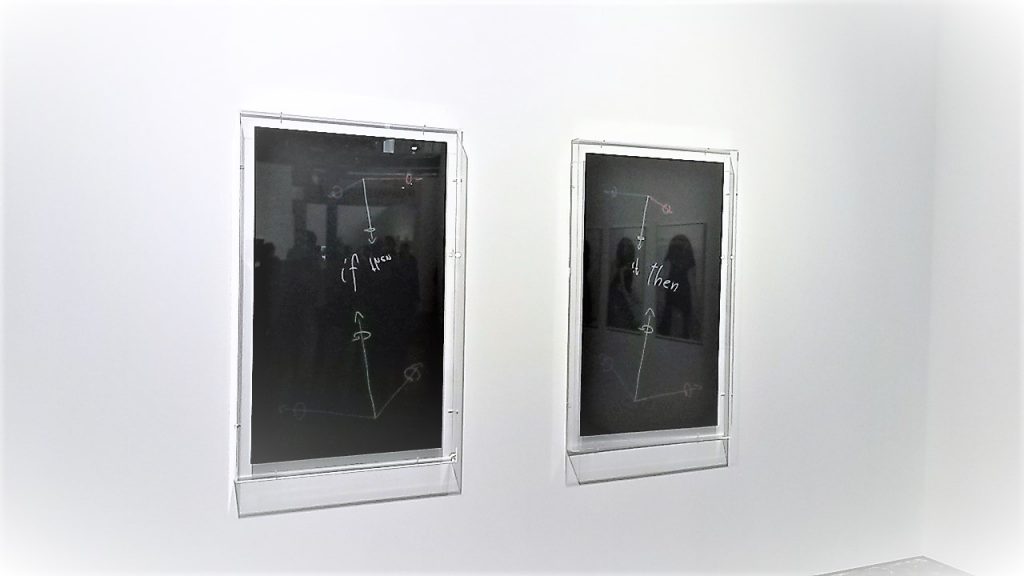Art is mostly about perspective. If two people have not the same perspective, they most probably get not the same thing out of the same piece of art. I wonder if we two agree on what is the message of this masterpiece, above. It was exhibited at the ARTberlin this weekend (www.artberlin.de).
The above images show each a statement „if then“ and two origins of Cartesian coordinate systems. Interestingly the word „if“ is up-side down and quite small in right image and normal as well as larger in the left one. Also the „then“ is large and up-side down in one image and small and on its feet in the other one. It is if the statement is seen from two opposing perspectives in the two images.
Thus it stands to reason that the coordinate systems indicate the point of view in a 3d space — and this is shown in two 2d images. You see how these two systems look at each other, one perspective in each image. The coordinates look the same in both images, but they are indeed opposed. And yet they perceive a slightly different object in the middle. Even though they still would claim to see exactly the same — just a „if then“. Would they understand that they do not understand?
Anyways, from what I wrote you might already see what I am getting at. I feel, the two images try to tell a story that even such ‚rational things‘ like programming language or logic (indicated by the ‚if then‘ statement) are not universally perceived.
A wonderful and threatening observation at the same time. Here I’d like to share a little text regarding emotions in business operations. Here Liane Davey writes on how different perspectives come up, and how you can address them professionally. I like this very much, since I recently gathered a lot of experience with a very similar technique, which I might write about later. But now Liane’s quote:
[…] When you see or hear the emotional layer, stay calm, keep your tone level and ask a question to draw them out and get them talking about values. “I get the sense you’re frustrated. What’s behind your frustration?” Listen to their response and then go one layer further by testing a hypothesis. “Is it possible that you’re frustrated because we’re placing too much weight on the people impact of the decision and you think we need to focus only on what’s right for the business?”
